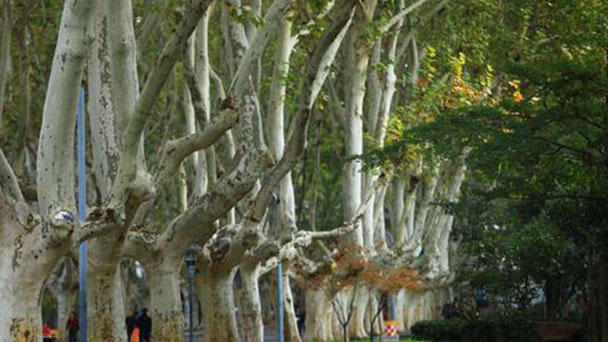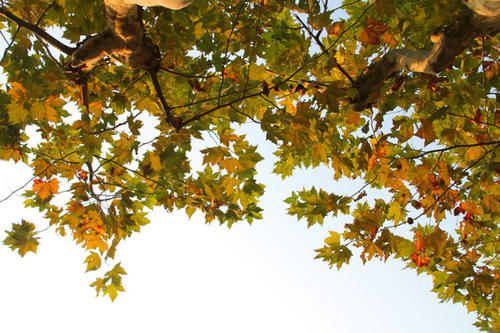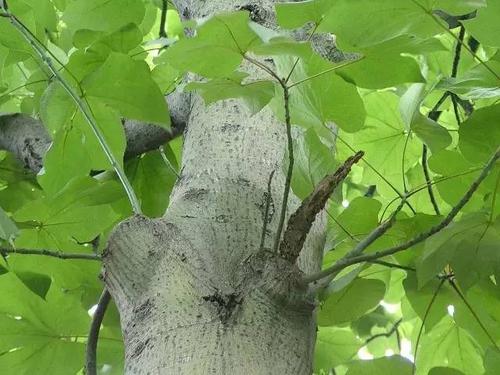How to propagate Firmiana Simplex
Written by Maggie
Dec 25 2020

The propagation methods of Firmiana Simplex include sowing propagation, cutting propagation and root splitting propagation, mainly using seeding propagation.

Seeding propagation of Firmiana Simplex
The fruit of firmiana simplex usually dehydrates quickly after ripening, so the seeds should be collected in time to prevent the seeds and fruit petals from dispersing in the wind. In September and October of each year, the fruit is ripe and can be harvested.For seed collection, we should select the strong female trees with strong growth and free from pests and diseases, and select the larger fruit for harvest. When harvesting, hook knives or high branch scissors are often used to harvest the fruit together with the fruit stalks. In addition, tools such as bamboo poles can be used to break fruit stalks and harvest fruits. The collected fruits were stacked indoors, spread out to dry, and the seeds of firmiana Simplex were peeled when the fruits split.
Sun-dried, pure seeds can be sown in the autumn of the same year. If no sowing is done in the current year, dry or sand treatment can be used and sowing can be carried out in the spring of the following year. Because the seed coat of Firmiana Simplex seeds is relatively thin, the seeds tend to lose water and become dry, which leads to loss of germination ability. Mixed sand layer is usually used for wet accumulation.
The concrete method of mixed sand layer wet accumulation is to mix the seeds with 6 parts of wet coarse sand, and then put them in the shade. General heap thickness control is 20 cm to 30 cm, the surface needs to be covered with a wet thin package or straw curtain for processing.
Since Firmiana Simplex has a high requirement on the soil at the seedling stage, it is necessary to dig and level the soil before sowing, disinfect the soil and apply sufficient base fertilizer. At the same time, it is necessary to sow after making the seedbed.
The seeds of Firmiana Simplex will germinate in alternate years or lose their germinating power when they are directly planted in the soil without processing, so it is important to accelerate the germination before sowing. If it is Firmiana simplex seed treated with sand in autumn, the germination will be more orderly, so it is generally not used for seed treatment, but can be sown directly. For Firmiana Simplex seeds, we need to do a good job in accelerating germination. To do this: Soak the seeds of Firmiana Simplex in warm water 30 to 40 days before sowing. When soaking seeds, it is necessary to keep water filling and stirring at any time. Such immersion takes 24 hours. Then clean the seeds with clean water, remove them, and mix them with wet sand in the leeward. The stack thickness should not exceed 30 cm. The surface also needs to be covered with wet sheathing or straw curtain, and often overturned and rehydrated to be sown after the Firmiana Simplex seed has begun to germinate. In order to ensure the orderly emergence of seedlings, the method of batch sowing is often adopted. The germinated seeds are selected and sown, and the remaining seeds are mixed with sand to promote buds, so that the sowing is carried out in batches.
Sowing time can be chosen in spring or autumn, but spring sowing time is usually adopted, the time is about early April, and drill sowing is usually adopted. The sowing rate is controlled at 250 kg to 300 kg per hectare. After seeding, cover the soil with a thickness of 1 to 1.5 cm. Usually about 3 weeks after sowing, seedlings can sprout and be unearthed.

Firmiana Simplex grows slowly at the seedling stage. Terminal bud formation and stop growth will be relatively early, so it is particularly important to apply basal fertilizer before sowing. In addition, the stems of Firmiana Simplex are thick and the leaves are large, which requires timely thinning of seedlings. If the thinning of seedlings is not handled in time, it is easy to cause the big and small seedlings to differ greatly. In addition, because Firmiana Simplex seedlings grow slowly and prefer shade in the initial stage, if the thinning is too early or too thin, it will affect the growth of seedlings. Usually when the seedling height reaches about 10 centimeters, the first thinning out can be carried out. Generally, the seedlings can be thinned 2 to 3 times a year, and the final seedling yield needs to reach the requirement of 6 plants per square meter.
Firmiana Simplex seedlings grow slowly. Attention should be paid to weeding, loosening soil and topdressing to accelerate seedling growth. After fall seedling leaves can dig up the seedling into the ditch over the winter, or with shallow ditch planting. It is important to note that the seedlings should not be arranged too closely in the sham planting. Generally use sand to fill the root, the upper part of the ditch can use general soil. Fake plants often need to be checked, especially in the spring, but also many times to check. If found moldy branches, it should be promptly removed and ditch disinfection. In the spring planting, choose in April, the middle, at this time can effectively reduce the phenomenon of pumping after planting. After general transplant, breed again 4 years to 5 years, seedling dry reach 4 centimeters to 5 centimeters above when it can be out of bed.
Cutting propagation of Firmiana Simplex
The cuttage of Firmiana Simplex was mainly made from hard twig, but sometimes from young twig.Hard cuttings can be carried out in spring and autumn, but usually in autumn cuttings, the next spring transplant effect is better. Twig cuttings are usually carried out in summer.
During cuttings, healthy vegetative shoots are usually selected as cuttings from the best individual plants adapted to the best varieties in the region. Cut into 8cm to 10cm long. One pair of intact blades shall be kept at the top, and each 50-100 leaves shall be bundled into a bundle, and the lower end shall be tidy. Cuttings should be treated with indoleacetic or naphthoxyacetic acid solutions of 50 mg/kg to 100 mg/kg for 12 to 24 hours. Cutting soil can be selected river sand or vermiculite. River sand or vermiculite should be disinfected.
The density of cuttings is usually 10 cm apart and 5 cm apart. Vertical insertion, cutting depth of about 2/3 of the length of cuttings. It needs to be pressed tightly after insertion, and water spray is wet. Generally in order to keep the soil moisture and the air of the cuttings moist, reduce the transpiration of the cuttings leaves, and it should be covered in plastic film above the cuttings, and the need for timely spray and ventilation, in order to adjust the temperature and humidity in the film. Later we also needs to increase the light, is conducive to cuttings rooting.

Latest Updated
- Benefits of Bugleweed - 7 Science-backed Health Benefits
- Bugleweed Dangers & Side Effects - Is It Poisonous?
- How to Plant Evergreen Trees - What You Should Know
- When to Plant Evergreens - Grow Guide for Evergreen Trees
- 12 Wonderful Evergreen Shrubs for Your Garden
- 12 Popular Evergreen Plants with Pictures for Beginners
- When And How To Prune A Lilac Bush Like a Pro
- How to Grow & Care for Lilac Vine (Hardenbergia Violacea)
- Japanese Lilac Tree (Syringa Reticulata) Care & Propagation Guide
- Shumard Oak Pros and Cons - What to Know
Popular Articles
- Winter maintenance of Antirrhinum Majus
- How to Grow Terminalia Mantaly Tree
- How to Grow and Care for Crossostephium Chinense
- How to grow Antirrhinum Majus in spring
- Peristeria Elata (Dove Orchid) Profile: Info & Care Guide
- Underwatered Snake Plant (Sansevieria Trifasciata) - Signs And How To Fix
- How to Care for Brazilian Jasmine Plant (Mandevilla Sanderi)
- How to Grow & Care for Graptopetalum Purple Delight in Summer
- Rosa Chinensis (China Rose): Plant Growing & Care Tips
- How to Care for Baby Sun Rose (Aptenia Cordifolia)